Dresden Carl Thieme porcelain, pair of vases with bleu céleste fond and garlands and ram’s heads, ca. 1890.
H 35 cm W 19 cm
€ 750,00
Prijs incl. 6% BTW & Verzendingskosten
Out of stock
Meer informatie
The Sèvres Royal Factory introduced its brilliant blue celeste ground color in 1753. It was one of the most expensive colors to produce. In the 19th century there were many porcelain painters in Saxony who did their work at home and gave many new impulses to the traditional porcelain art. They creatively decorated white china that they had bought elsewhere. Between 1855 and 1944, Dresden housed more than 200 painting shops; but the dresden style is always associated with wares bearing the blue crown mark which were first registered by Richard Klemm, Donath & Co., Oswald Lorenz and Adolph Hamann in 1883 and the type they produced.. The style they used. used a mixture of Meissen and Viennese flower and figure painting. Later on, other decorators used the Crown and Dresden brand, and names like Franziska Hirsch, Ambrosius Lamm, Carl Thieme and Helena Wolfsohn were associated with dresden porcelain. One of them, Carl Thieme (1823 -1888), decided to make his own white pieces. For this reason, in 1872 he founded “Carl Thieme’s Saxon Porcelain Factory in Potschappel-Dresden”. One of Thieme’s best employees was Karl August Kuntzsch, a talented flower modeler and later his son-in-law and business partner. He founded the great tradition of lavish floral covering that is still very characteristic of Dresden Porcelain. Confusingly, the term ‘Dresden Porcelain’ is often used (and misused) to refer to porcelain decorated in Dresden as well as porcelain which was made in Dresden.. The Potschappel company produced art porcelain in the old tradition and is still operational. On display are two exceptional amphorae vases with lid. They stand on a rectangular base with a round foot, merging into a circular narrowing stem with white gilded palmettes, merging into an ovoid corpus with narrowing neck and spreading lip. On this is a round gradually narrowing lid with a white flower bud as a handle. The corpus, neck and lid have a beautiful blue celeste ground color with reticulated gilt painting. The corpus is covered on both sides with a white glazed floral garland and the handles are two beautiful ram’s heads in biscuit. In the center is a cartouche with an oval thick gilded frame on both sides. On one side the cartouche is filled in with a hand-painted landscape, on the other side with two playing putti. Both vases are marked at the bottom with a pseudo-Sèvres mark with crown with the letters “C.T.” inside. Both vases were made during the last quarter of the 19th century.
Condition: perfect.
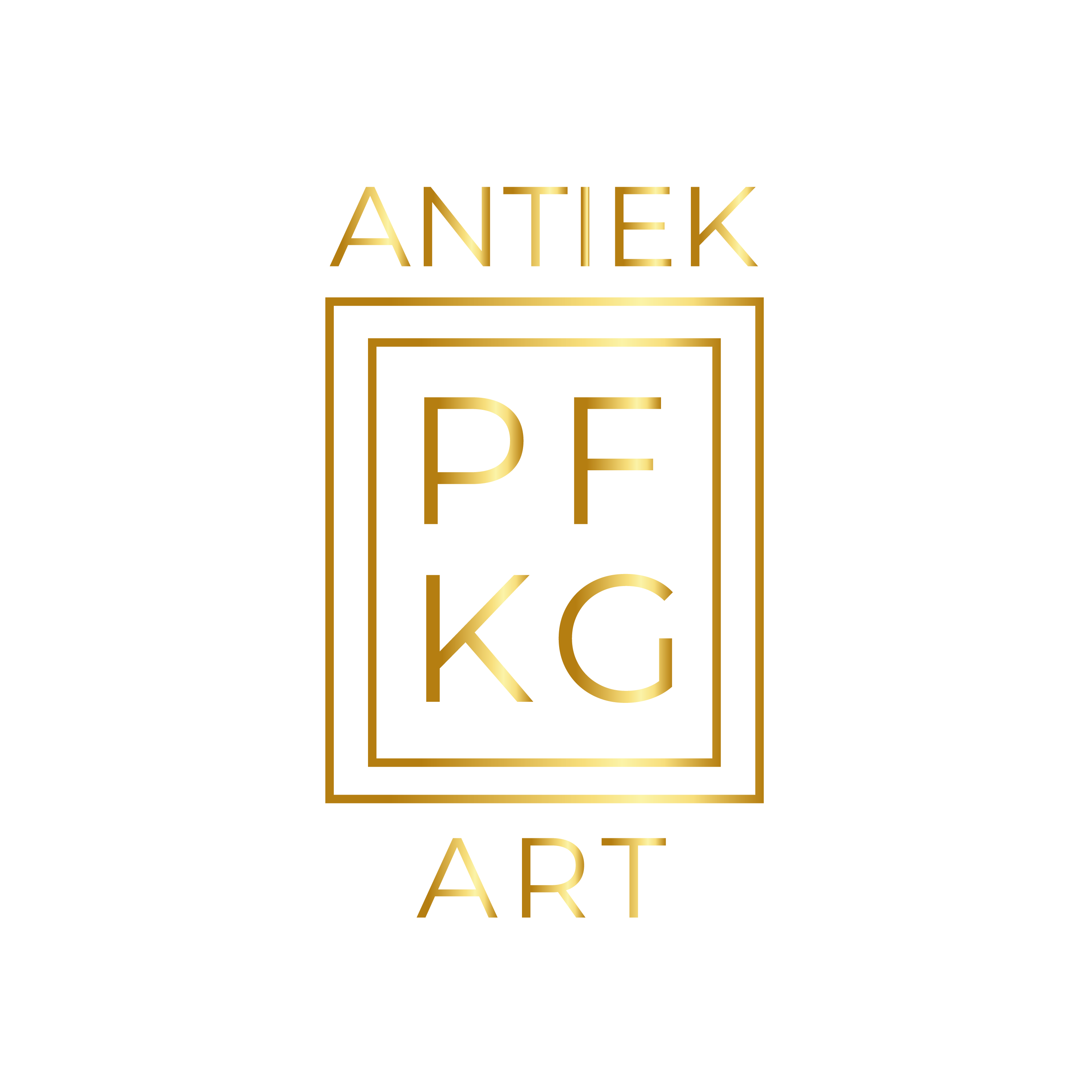
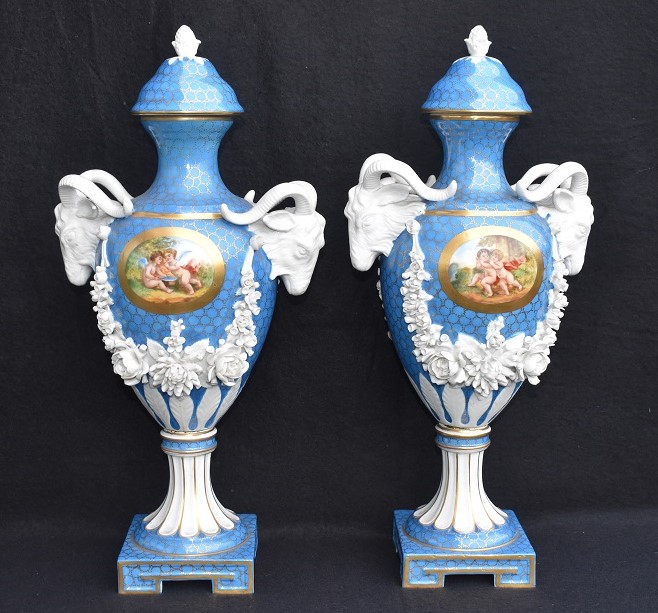

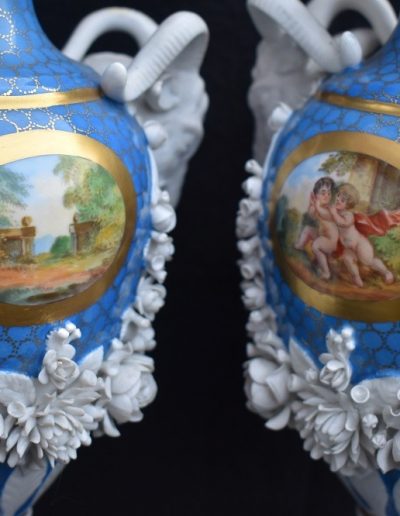

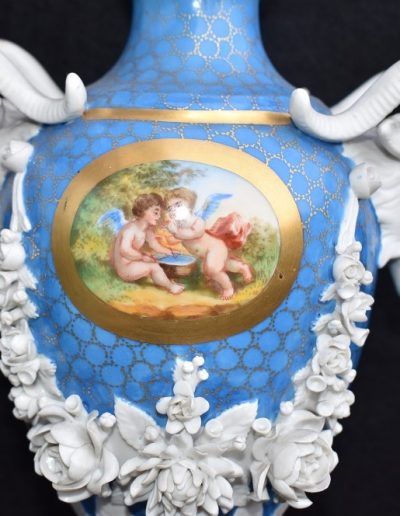


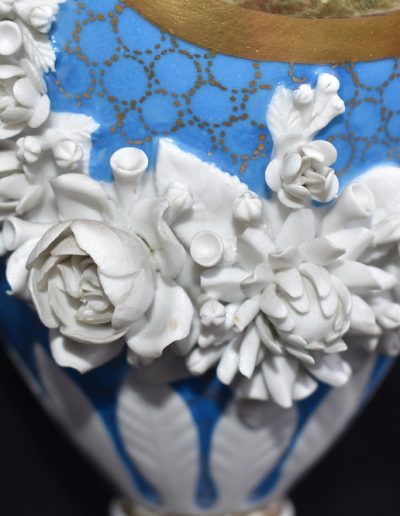
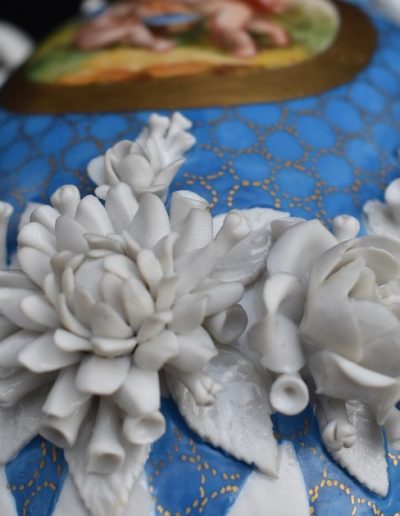

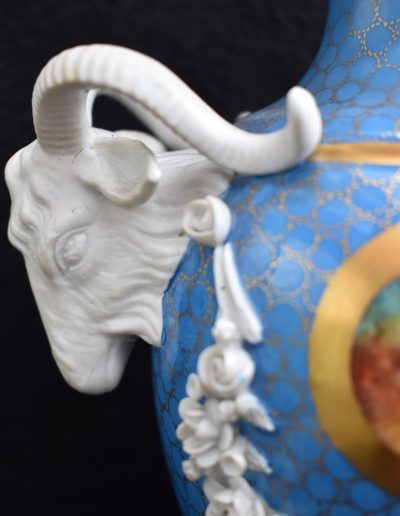

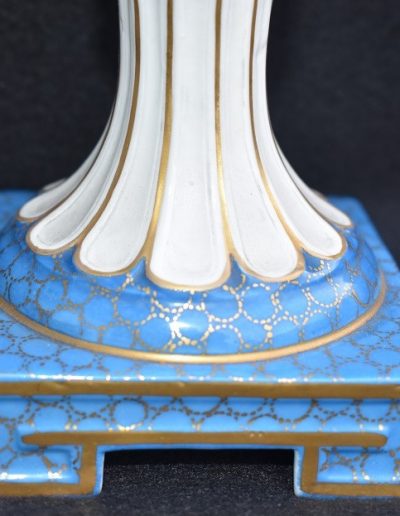

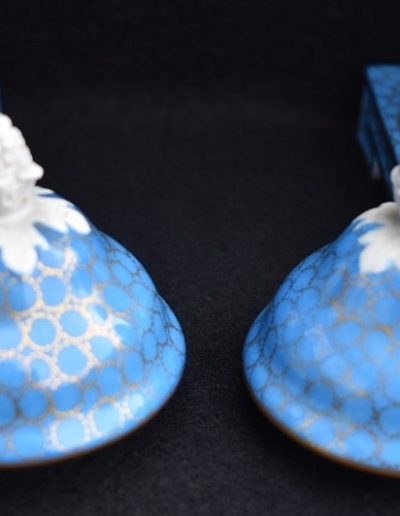
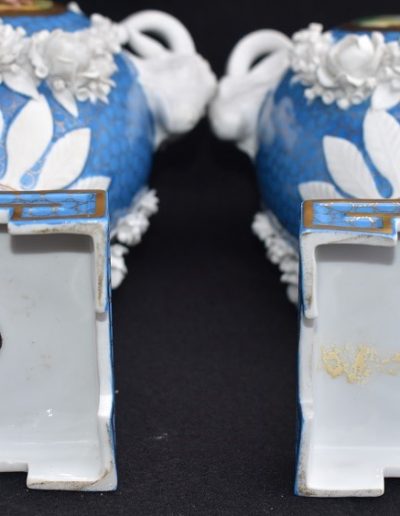

Reviews